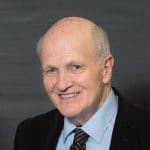Banning the production of highly enriched uranium
By Zia Mian, Michael Schoeppner, Frank von Hippel | March 18, 2016
The nuclear weapon used by the United States on August 6, 1945, to destroy the Japanese city of Hiroshima contained about 60 kilograms of enriched uranium. It was simple: One piece of uranium metal was fired at another to make a supercritical mass and generate the nuclear explosion. Starting in the 1970s, but especially since the attacks on the United States in September 2001, there has been concern that terrorists could acquire enriched uranium and make such a simple weapon. To do so, they would need to gain access to several tens of kilograms of material enriched to more than 20 percent uranium 235, i.e., highly enriched uranium (HEU). As of the end of 2014, the global stockpile of HEU was estimated to be about 1,370 tons, sufficient for more than 20,000 Hiroshima type weapons. A new report from the International Panel on Fissile Materials (IPFM) proposes that it is necessary and feasible for all production of HEU for military and civilian purposes to be banned.
The Nuclear Security Summits of 2010, 2012, and 2014 sought to focus the attention of world leaders on increasing the security of HEU (and separated plutonium, the other material that can be used to make a nuclear weapon) and minimizing the use of HEU. The primary concern has not been on reducing the almost 1,000 tons of HEU that is in operational and retired nuclear weapons and in nuclear weapon complexes—about 90 percent of which is in Russia and the United States—or the about 300 tons of HEU in naval fuel or set aside for this use. The target has been the smaller amounts of relatively less secure HEU that is used for civilian purposes: as research-reactor fuel and neutron “targets” for producing medical radioisotopes.
The 2010 summit communiqué declared that the leaders gathered in Washington D.C.:
“Recognize that highly enriched uranium and separated plutonium require special precautions and agree to promote measures to secure, account for, and consolidate these materials, as appropriate; and encourage the conversion of reactors from highly enriched to low-enriched uranium fuel and minimization of use of highly enriched uranium, where technically and economically feasible.”
On March 31 and April 1, what will probably be the last Nuclear Security Summit is set to be hosted by President Obama in Washington, DC, giving world leaders one more chance to make cooperative progress in securing fissile material. We estimate that globally about five tons a year of HEU is used for naval and research-reactor fuel and in neutron targets. Russia uses an additional two tons or so per year for its tritium-production and breeder reactor programs, but those uses are likely to be phased out in the next decade. The new IPFM report argues that HEU uses for non-weapons purposes could be driven to near zero within the next two decades.
Russia and the United States have about 700 tons of HEU remaining from their excess Cold War nuclear weapons. This excess HEU is more than enough to supply non-weapon needs during the next few decades, when the nations of the world can follow practical paths forward toward phasing out non-weapon use of HEU.
Since 2004, the US Energy Department’s Global Threat Reduction Initiative has funded the cleanout of HEU down to less than a kilogram in 23 non-weapon states and the conversion from HEU to LEU fuel of about 30 research reactors, including some in the United States. Also, as a result of pressure from the United States and the International Atomic Energy Agency, the producers of medical radioisotopes are preparing to shift from HEU to LEU neutron targets within the next few years.
About 100 HEU-fueled research reactors remain to be converted, however. About half are in Russia, which has cooperated with the United States in converting Soviet-exported HEU-fueled reactors but has not given priority to converting its own. While there are a lot more sites of concern in Russia, the total annual amount of HEU used in Russia’s research reactors is comparable to the amount used in the remaining high-powered HEU-fueled research reactors in the United States.
Forty of the remaining HEU-fueled reactors are critical assemblies, i.e., mockups of the HEU in reactors or nuclear weapons; 60 percent of them are in Russia. Some of these cannot be converted to low-enriched uranium, but most could be retired because criticality determinations can be done today by computer simulations and checked against an existing database of archived experiments.
Twenty of the remaining HEU-fueled reactors are pulsed reactors, 70 percent of them in Russia. Most of these were built to test the effects on electronic equipment of the neutron bursts from nearby nuclear explosions. Such work is of much lower priority today than during the Cold War, when the possibility of nuclear-war-fighting in space and in Europe were major preoccupations. The United States has retired virtually all of its pulsed reactors because of the high costs of maintaining security for the HEU. Russia could as well.
The biggest remaining challenge to ending non-weapon uses of HEU involves the largest annual consumer—naval reactors that propel submarines, aircraft carriers, and icebreakers. This is an issue that has received relatively little attention in the past Nuclear Security Summits, and it involves only four countries: the United States, Russia, the United Kingdom and India. France fuels its naval reactors with low-enriched uranium (LEU) containing less than 20 percent uranium 235, and it is believed that China does so as well.
The United States accounts for more than half of the HEU used in naval reactors. It is only recently, however, that the US National Nuclear Security Administration’s Office of Naval Reactors (ONR) has been willing to discuss the possibility of converting to LEU. In January 2014, in response to a question from the House Armed Services Committee, the ONR stated that it might be possible over 10 to 15 years to develop an LEU fuel that would make conversion possible.
This is a technical challenge, however, because the latest generation of US nuclear submarines are fueled with 30-to-40-year lifetime cores, and the Navy does not want to go back to mid-life refueling, as would be required with current reactor designs for foreseeable LEU fuels. With modified reactor and fuel designs, however, lifetime cores might be possible.
Russia would find it easier than the United States to convert because it refuels its submarines about every 10 years, and the enrichment of the HEU fuel used in most of its naval reactors is one quarter to one half of the 93.7 percent enriched, weapon-grade uranium used by the United States. It is an encouraging sign that Russia has already decided to fuel its next generation nuclear-powered icebreakers with LEU fuel.
If the United States converted its nuclear navy to run on LEU fuel, it is likely that the UK, which depends upon the United States for both HEU and naval reactor technology, would do so as well.
India, which has been assisted by Russia in designing its naval reactors and uses fuel with a similar enrichment, probably would follow Russia in switching to LEU. Unlike Russia and the United States, however, India does not have a large stock of HEU to use during a transition period. It might therefore delay joining an HEU production ban or, if it were willing to agree on arrangements to verify that the HEU was not used for weapons, might be able to obtain HEU from Russia.
In summary, although there are challenges in a few cases, it appears that there are paths forward to phasing out all non-weapon use of HEU during the next few decades.
The long-sought Fissile Material Cutoff Treaty (FMCT) would end all production of HEU (and plutonium) for weapon purposes. Given that there is enough excess HEU to satisfy non-weapons needs during a phase-out period, the FMCT could be broadened to ban production of HEU for all purposes.
Since there is no reason to continue plutonium separation for civilian purposes either, the FMCT could be broadened further to ban the production of all fissile materials for all purposes. Such a comprehensive ban would be much easier to verify than a limited ban on production just for weapons purposes and would be a building block for a world free of nuclear weapons.
Editor's note: This article is based on a new report published by the International Panel on Fissile Material,“Banning the Production of Highly Enriched Uranium,” by Frank von Hippel.
Together, we make the world safer.
The Bulletin elevates expert voices above the noise. But as an independent nonprofit organization, our operations depend on the support of readers like you. Help us continue to deliver quality journalism that holds leaders accountable. Your support of our work at any level is important. In return, we promise our coverage will be understandable, influential, vigilant, solution-oriented, and fair-minded. Together we can make a difference.


















It is difficult to understand how Congress could pass a law authorizing production of more HEU while callling it LEU with up to 20% enrichment .
ADVANCED NUCLEAR REACTOR FUEL.—The term
‘‘advanced nuclear reactor fuel’’ means fuel for use in an
advanced nuclear reactor or a research and test reactor,
including fuel with a low uranium enrichment level of not
greater than 20 percent.
The act is called the Nuclear Energy Innovation and Modernization Act.
How could this be approved when we are supposed to be reducing stockpiles of HEU?